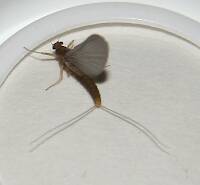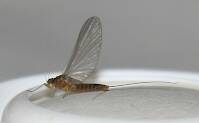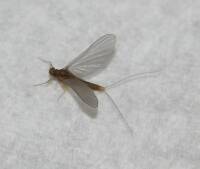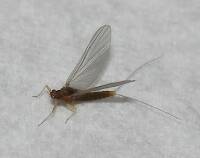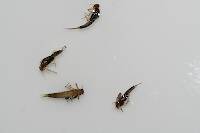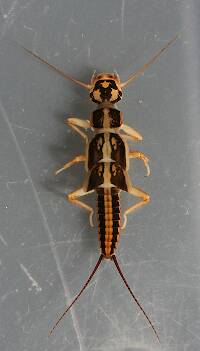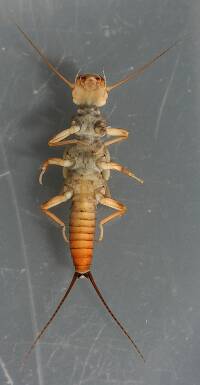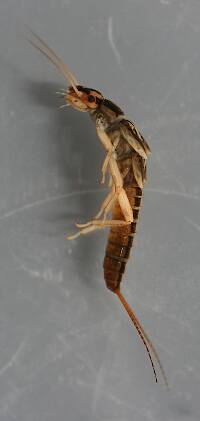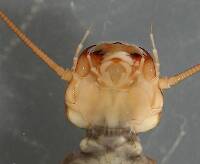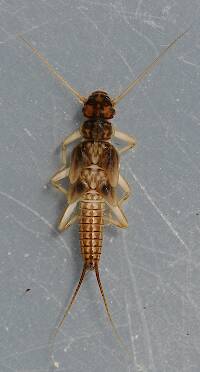
Hex Mayflies
Hexagenia limbata
The famous nocturnal Hex hatch of the Midwest (and a few other lucky locations) stirs to the surface mythically large brown trout that only touch streamers for the rest of the year.
Featured on the forum

I caught this tiny larva without a case, but it seems to key pretty clearly to to Glossosomatidae. From there, the lack of sclerites on the mesonotum points to either Glossosoma or Anagapetus. Although it's difficult to see in a 2D image from the microscope, it's pretty clear in the live 3D view that the pronotum is only excised about 1/3 of its length to accommodate the forecoxa, not 2/3, which points to Glossosoma at Couplet 5 of the Key to Genera of Glossosomatidae Larvae.

Troutnut is a project started in 2003 by salmonid ecologist Jason "Troutnut" Neuswanger to help anglers and
fly tyers unabashedly embrace the entomological side of the sport. Learn more about Troutnut or
support the project for an enhanced experience here.

I captured this small caddisfly from one of many dense mating swarms under overhanging alder trees in a slow stretch of the river. There were localized rises of trout under the swarms.
Litobrancha on Sep 23, 2006September 23rd, 2006, 4:52 pm EDT
mystacides. note the folded tent like posterior portion of the wings.
GONZO on Sep 23, 2006September 23rd, 2006, 7:05 pm EDT
A "Black Dancer" for sure. LaFontaine says that the shiny black wing is indicative of sepulchralis. However, on the Lehigh River and Mud Run I have found shiny-winged specimens and dull-winged specimens in the same swarm. And sepulchralis is the only Mystacides species in the collecting record for Carbon and Monroe counties. Still, I'd say sepulchralis is a safe bet.
Troutnut on Sep 24, 2006September 24th, 2006, 8:43 am EDT
You're right. I've got some much better Mystacides pictures lately with my new camera setup. I forgot I had one from the old site too.
Jason Neuswanger, Ph.D.
Troutnut and salmonid ecologist
Troutnut and salmonid ecologist
Quick Reply
Related Discussions
Topic
Replies
Last Reply
1
Aug 24, 2006
by Troutnut
by Troutnut
15
Jan 31, 2011
by Entoman
by Entoman



